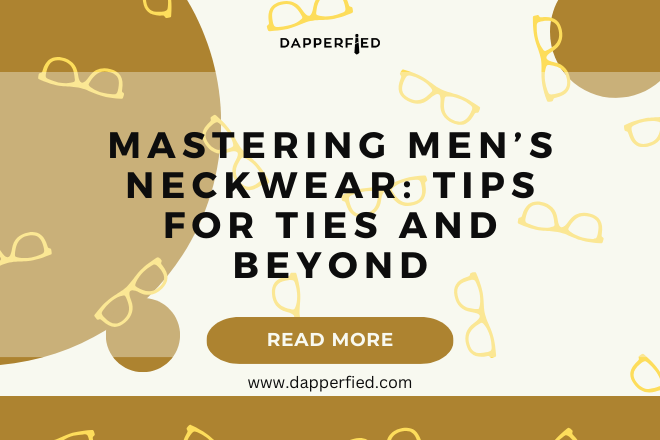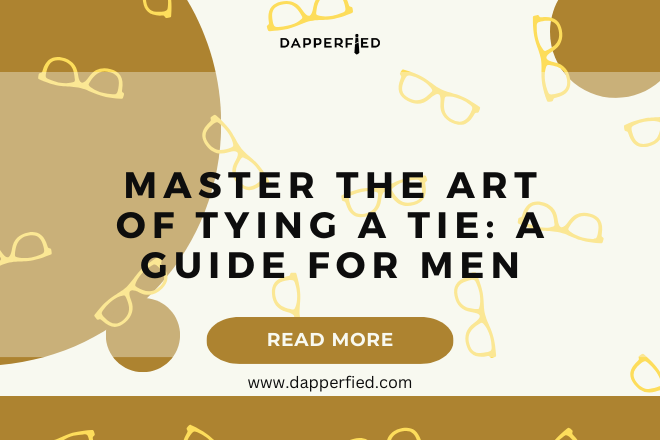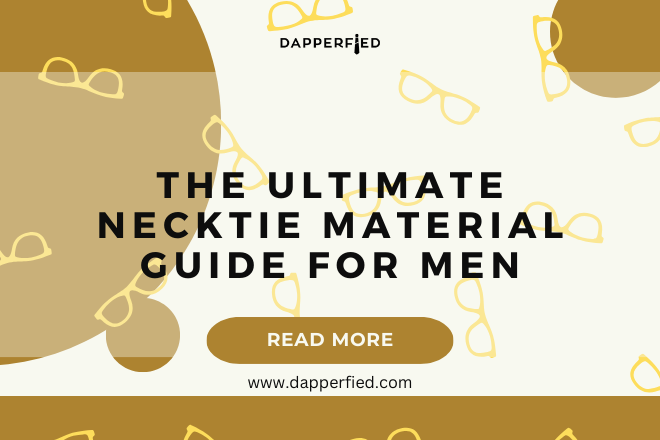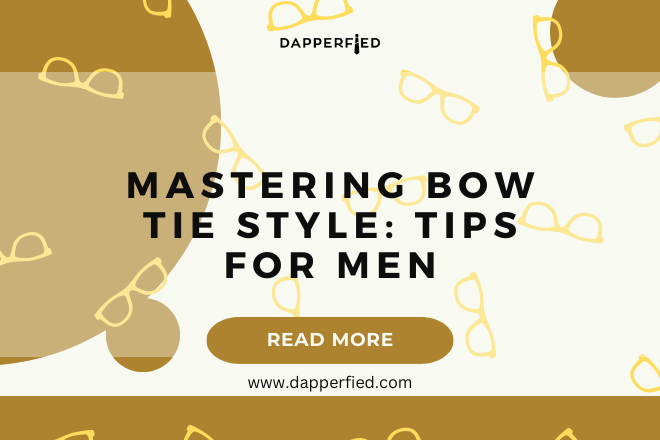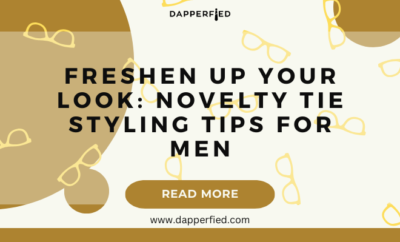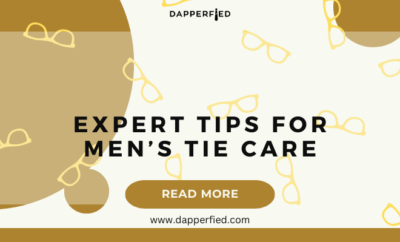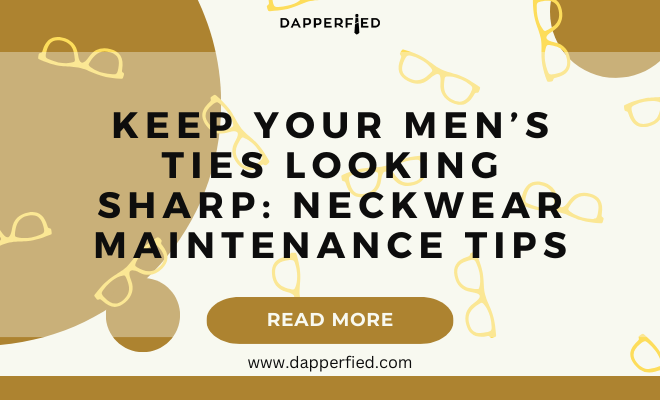
Men's Style
Keep Your Men’s Ties Looking Sharp: Neckwear Maintenance Tips
Neckwear, such as ties and bowties, are essential accessories that can elevate any outfit, whether it’s for a formal event or a professional setting. However, to maintain their quality and appearance, proper care and maintenance are crucial. Neglecting to care for your neckwear can result in wrinkles, stains, and even tears, which can diminish their overall appeal. In this article, we will explore the best practices for neckwear maintenance, including storing ties properly, cleaning and removing stains, ironing and steaming techniques, preventing wrinkles and creases, dealing with snags and tears, and professional neckwear care services.
Proper maintenance of your neckwear not only ensures that they look their best but also extends their lifespan. By following the tips and techniques outlined in this article, you can keep your ties and bowties in top condition for years to come.
Key Takeaways
- Proper storage is essential for maintaining the shape and quality of ties
- Regular cleaning and stain removal can prolong the life of neckwear
- Ironing and steaming techniques can help remove wrinkles and creases from ties
- Taking preventive measures can help avoid snags and tears in neckwear
- Professional neckwear care services can provide specialized treatment for delicate ties
Storing Ties Properly
Proper storage is essential for maintaining the shape and quality of your ties. When not in use, it’s important to hang your ties on a tie rack or a hanger specifically designed for ties. This helps to prevent wrinkles and creases that can occur when ties are folded or crumpled in a drawer. Additionally, hanging your ties allows for better air circulation, which can help prevent odors and mildew from developing.
Another option for storing ties is to roll them up and place them in a tie organizer or drawer specifically designed for ties. Rolling the ties instead of folding them can help prevent creases and wrinkles. It’s important to avoid hanging ties on sharp hooks or rough surfaces that can cause snags or tears. By storing your ties properly, you can maintain their shape and appearance for years to come.
Cleaning and Removing Stains
Cleaning and removing stains from neckwear can be a delicate process, especially when dealing with delicate fabrics such as silk. For minor stains, it’s best to spot clean the affected area using a gentle fabric cleaner or a mixture of mild detergent and water. Gently dab the stained area with a clean cloth or sponge, being careful not to rub too vigorously, as this can damage the fabric.
For more stubborn stains, it may be necessary to take your tie to a professional cleaner who specializes in neckwear. They have the expertise and tools to safely remove tough stains without causing damage to the fabric. It’s important to address stains as soon as possible to prevent them from setting and becoming more difficult to remove. By taking the appropriate steps to clean and remove stains from your neckwear, you can keep them looking fresh and well-maintained.
Ironing and Steaming Techniques
“`html
| Technique | Advantages | Disadvantages |
|---|---|---|
| Ironing | Removes wrinkles effectively | Can be time-consuming |
| Steaming | Quick and easy to use | May not remove deep wrinkles |
“`
Ironing and steaming are effective methods for removing wrinkles and creases from ties and bowties. When using an iron, it’s important to set it to the lowest heat setting and place a clean cloth between the iron and the tie to prevent direct contact with the fabric. Gently press the iron over the tie, being careful not to leave it in one spot for too long, as this can cause damage to the fabric.
Steaming is another effective method for removing wrinkles from neckwear. Using a handheld steamer, gently pass the steam over the tie while holding it taut to remove any wrinkles or creases. Be sure to keep the steamer at a safe distance from the fabric to avoid causing any damage.
It’s important to note that not all fabrics are suitable for ironing or steaming, so it’s essential to check the care label on your tie before using these methods. By using the appropriate ironing and steaming techniques, you can keep your neckwear looking crisp and well-maintained.
Preventing Wrinkles and Creases
Preventing wrinkles and creases in your neckwear starts with proper storage and handling. As mentioned earlier, hanging your ties on a tie rack or rolling them up for storage can help prevent wrinkles from forming. When wearing your tie, be mindful of how you handle it to avoid unnecessary creasing.
Another way to prevent wrinkles is to untie your tie carefully after each use rather than pulling it off over your head. This helps maintain the shape of the tie and prevents unnecessary creasing. Additionally, it’s important to store your ties in a well-ventilated area to prevent moisture from causing wrinkles or mildew.
By taking these preventative measures, you can keep your neckwear looking smooth and wrinkle-free.
Dealing with Snags and Tears

Snags and tears can be a common issue with neckwear, especially when dealing with delicate fabrics such as silk. If you notice a snag in your tie, it’s important to address it as soon as possible to prevent it from getting worse. Gently pull the fabric around the snag to smooth it out, being careful not to pull too hard and cause further damage.
For tears or more significant damage, it may be necessary to take your tie to a professional tailor who specializes in repairing neckwear. They have the expertise and tools to mend tears and snags without causing further damage to the fabric. It’s important not to attempt DIY repairs on delicate neckwear, as this can result in irreparable damage.

By addressing snags and tears promptly and seeking professional help when needed, you can prolong the life of your neckwear and keep them looking their best.
Professional Neckwear Care Services
For those who want to ensure their neckwear receives the best care possible, professional neckwear care services are an excellent option. These services specialize in cleaning, repairing, and maintaining ties and bowties, using specialized techniques and tools to ensure the highest quality care.
Professional cleaners have the expertise to safely remove tough stains without causing damage to delicate fabrics such as silk or satin. They also have the tools and knowledge to effectively remove wrinkles and creases without compromising the integrity of the fabric.
In addition to cleaning and stain removal, professional neckwear care services also offer repair services for snags, tears, or other damage that may occur over time. They have the skills and experience to mend delicate fabrics without causing further damage.
By utilizing professional neckwear care services, you can ensure that your ties and bowties receive the best care possible, allowing you to enjoy them for years to come.
In conclusion, proper maintenance of neckwear is essential for preserving their quality and appearance. By following the tips and techniques outlined in this article, you can ensure that your ties and bowties remain in top condition for years to come. From storing ties properly to addressing snags and tears promptly, taking the appropriate steps for neckwear maintenance will help you enjoy your accessories for many occasions to come.
If you’re interested in men’s fashion and accessories, you may also want to check out this article on men’s tailored suits tips to look best. It offers valuable advice on how to choose and style a tailored suit for a polished and sophisticated look. Just like maintaining your ties and neckwear, knowing how to properly wear and care for a tailored suit is essential for a well-put-together appearance.
FAQs
What are the different types of men’s ties and neckwear?
There are several types of men’s ties and neckwear, including neckties, bow ties, ascots, and cravats. Each type has its own unique style and can be worn for different occasions.

How should I store my ties and neckwear?
Ties and neckwear should be stored hanging or rolled to prevent wrinkles and creases. It’s best to use a tie rack or hanger to keep them organized and in good condition.
How do I clean and maintain my ties and neckwear?
Most ties and neckwear should be dry cleaned to maintain their shape and color. Avoid getting them wet or using harsh chemicals, as this can damage the fabric. It’s also important to handle them with care to prevent snags or tears.
Can I iron my ties and neckwear?
It’s best to avoid ironing ties and neckwear, as the heat can damage the fabric. If they do become wrinkled, you can hang them in the bathroom while you shower to let the steam naturally release the wrinkles.
How often should I replace my ties and neckwear?
With proper care and maintenance, ties and neckwear can last for many years. However, if they become stained, torn, or excessively worn, it’s time to replace them with new ones.

